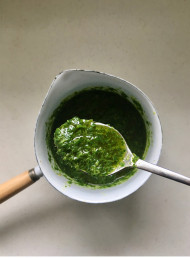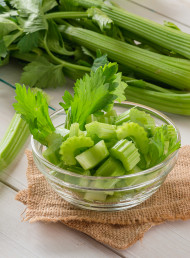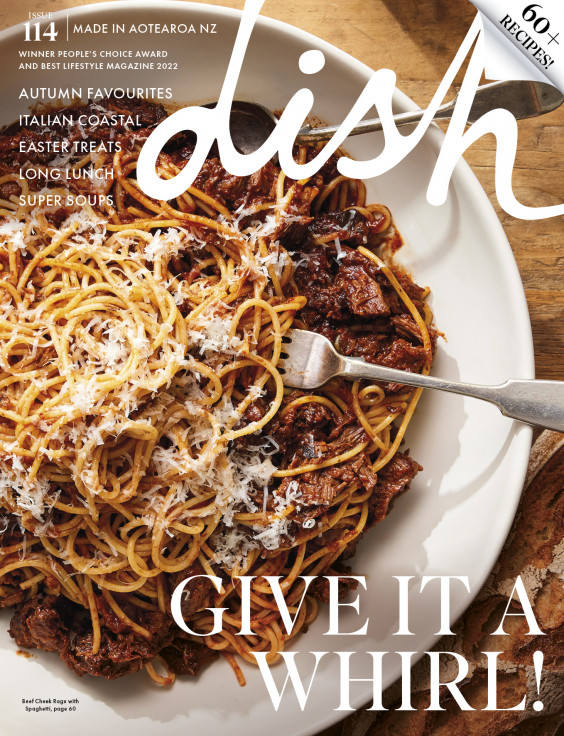Jane Lyons: Flour & Water

Waste not, want not has rarely been more pertinent than in today's world. Jane Lyons shows us how to make the most of what we have.
Contrary to what the title of this column may suggest, Flour and Water is not about making bread. But it is about the concept of using a little to make a lot, as is done with flour and water when combined with salt and the air around us to make sourdough bread - a product which is so much more than the sum of its parts. This column aims to be much more than the sum of its parts too. I hope that by providing a handful of tips and tricks for using more, wasting less and thinking carefully about our resources, we'll be able to feel more connected with the what, the how, the when and the why of our food.
TO EAT: Beetroot Greens
Our beautiful, earthy dark pink friends are abundant at this time of year and as much as we love to use their versatile bulbs, the leaves and stems of beetroot are often quickly discarded without a second thought. In fact, this discarding decision is often made for us by supermarkets which is a shame. Beetroot greens are not only brimming with nutrients but provide big taste and texture too – think silverbeet meets spinach. Next time you find yourself with a bunch of beetroot greens, try using them in a few of these ways:
1 Roughly chop and steam, before folding through a frittata mixture.
2 Boil for two minutes, strain then sauté with crushed garlic and serve as a side dish.
3 Whizz in a food processor with plenty of lemon juice, lemon zest and fresh herbs then fold through cooked pasta with feta or grated parmesan.
TO PRESERVE: Quince
They’re funny old things, quince. The impatient child in me still gets slightly hung up on the fact you can’t just bite into them freshly picked from the tree. They’re also devilish to peel and one must be fully sober before attacking them with a knife. But once a little heat comes into play and their flavour, texture and even colour transforms, all is understood. Quince are a great fruit to preserve as they deliver a unique tang, which when injected into dishes throughout the year, creates something a bit special. Adding a hint of poached quince to an apple crumble can work wonders, as can popping a splash of their poaching liquid into a gin and soda. They’re not often spotted on supermarket shelves but can be found at farmers’ markets, growing wild or if you’re lucky a neighbour might be happy to hand a boxful over the hedge. When poaching try adding a vanilla bean, strip of citrus or stick of cinnamon to experiment with flavour.
TO THINK ABOUT: Plastic wrap
Plastic wrap can be toxic for our food and a real clogger of landfills, taking hundreds of years to break down. It may be tricky to go cold turkey but I’m going to challenge myself to phase it out. Here are some ideas for reducing usage:
1 Storing and reheating leftovers in glass containers.
2 Use beeswax wraps to cover food or wrap sandwiches, cheese etc. Available at most health food stores or go online for how to make your own.
3 Cover bowls of food with clean plates or bowls.
4 Ask yourself “does this really need to be wrapped?” You might surprise yourself with how this has just become a bit of a habit.
latest issue:
Issue #114
Autumn has arrived, and with it, the latest issue of dish, jam-packed with recipes that will have you fizzing to get in the kitchen! With a long Easter lunch featuring perfectly pink, blushing roast leg of lamb and wildly decadent baked mashed potatoes with caramelised onions, to simply scrumptious chocolate treats and sensational seasonal baking this issue has you covered - we reckon the Hot Cross Buns are our best yet! Salads make way for soothing soups, pies, puddings and our cover star beef cheek ragù with spaghetti – a must-make dinner for family and friends. With over 60 recipes in our latest issue there’s plenty of inspiration to keep you busy – and well-fed! Don’t forget to share your dish dishes with our Facebook community.



